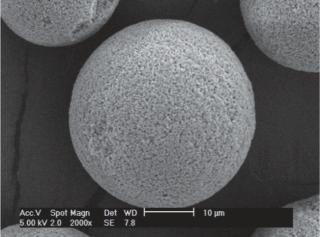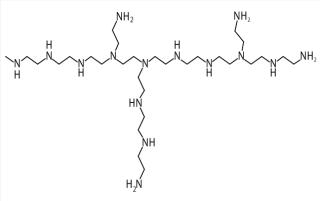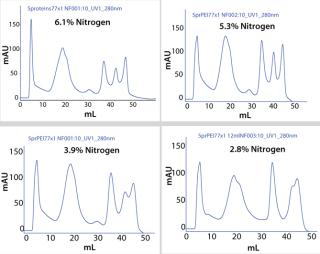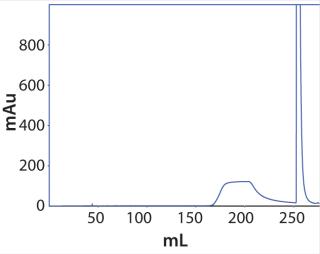The concept of quality by design (QbD), although not new, has presented implementation opportunities and challenges to both the bioprocessing industry and regulators (1,2,3,4). Tools such as design of experiments (DoE), cause and effect analysis, and multivariate analysis provide for systematic risk assessment and help identify critical quality attributes (CQAs) and critical process parameters (5,6,7). QbD is intended to ensure that manufacturing processes make products that meet predefined quality parameters. Key elements in defining such parameters (quality profile) for a target product include
- Understanding raw material variability and its impact on process performance and product quality
- Designing robust processes that are tolerant of slight variations to raw materials such as chromatographic media
- Identifying CQAs, process parameters, and sources of variability
- Controlling processes to produce consistent quality.
Chromatographic media is the center of downstream purification in the biopharmaceutical manufacturing process and therefore is a critical raw material for achieving a consistent process and producing a high-quality product. For certain processes, traditional ion exchangers often require tight control of critical process parameters such as conductivity and pH (8). Lot-to-lot consistency of chromatographic media is critical to enabling and maintaining a robust operation so that minimum change occurs in separation performance, column efficiency, and breakthrough capacity.
PRODUCT FOCUS: ALL BIOLOGICALS
PROCESS FOCUS: DOWNSTREAM PROCESSING, PROCESS DEVELOPMENT
WHO SHOULD READ: PLANT MANAGERS, PROCESS ENGINEERS
KEYWORDS: CHROMATOGRAPHY, SEPARATION, MEDIA, QBD, VARIABILITY
LEVEL: INTRODUCTION
In general, performance variability in chromatographic media is due to variability in ligand density and its impact on separation performance. Our study evaluated the impact of ligand density on separation efficiency and breakthrough capacity of BAKERBOND PolyPEI (hereafter referred to as PolyPEI), which is a polymer-based, multimode weak anion exchanger with a 35-µm particle size. Functionality of this product is obtained by covalently bonding PEI to the surface of highly cross-linked polymethacrylate beads. As Figure 1 illustrates, a unique ligand chemistry results in various weak anionic-exchange sites due to the presence of primary, secondary, and tertiary amine groups on the polyethylenimine (PEI) ligands.
Experiment
Materials: We obtained PolyPEI (PN 7585), tris base (tris (hydroxymethyl)-amino methane, PN 4109), sodium chloride (PN 4058), and sodium hydroxide (PN 4722) from Avantor Performance Materials (Phillipsburg, NJ). We obtained proteins BSA, IgG, lysozyme, β-lactoglobulin-B, and β-lactoglobulin-A from Sigma and used them without further purification. We carried out separation and dynamic binding capacity using a packed column (7.75 × 10 cm) with an Äkta Explorer chromatography system (GE Healthcare).
Table 1 shows specifications and average lot results for eight different lots of PolyPEI. The percent nitrogen measurement is done with carbon–hydrogen–nitrogen (CHN) analysis and indicates ligand density. To determine the impact of ligand density, samples of PolyPEI with nitrogen content outside of our established specification range (2.8% and 3.9% nitrogen) were synthesized by using different concentrations of reagents and processes from those used in a typical production lot. We used samples of commercial lots within specification as well as special lots having nitrogen content slightly outside of established specification. Percent nitrogen content specification range represents ligand density range of 1.0–1.4 mM/mL. We packed all PolyPEI samples into 5-mL columns (0.77 × 10 cm) for testing separation performance. We evaluated selectivity and resolution by injecting a sample consisting of five proteins with different isoelectric point (pI) and molecular weight values (Table 2).
Table 1: Established PolyPEI specifications and typical lot result averages
Table 2: Mixture of proteins with different isoelectric point (pl) and molecular weight (MW)
We performed chromatographic separations by injecting 2 mL of protein mixture sample and running a linear gradient from 0 to 100% buffer (B) in 10 column volumes (CV) (buffer A: 50 mM TRIS, adjusted to pH 8 using HCl; buffer B: buffer A with 1 M NaCl, pH 8). Similarly, th
e dynamic binding capacity (DBC) of media with various nitrogen percentage values was determined using bovine serum albumin (BSA) as the model protein. Before each experiment, we washed the columns with 5 CV of 0.5N NaOH at 3 mL/min (binding buffer A: 200 mM sodium acetate, pH 6.2; elution buffer B: 1 M sodium acetate, pH 6.2). We injected 50 mL of 1 mg/mL BSA samples at 2.4 mL/min (320 cm/h) and eluted the bound protein using elution buffer B in 5 CV after washing with 5 CV of buffer A.
Results and Discussion
As Figure 2 illustrates, the retention times of PolyPEI that meet specification with nitrogen content between 4.5% and 6.5% are constant and within performance tolerances of the packed columns and chromatographic separation. Separation efficiency also remains unchanged. PolyPEI with a 2.8% nitrogen content, which is below established specification range, show retention times differ by ∼3% from other samples. Selectivity at 2.8% nitrogen is maintained, as shown by the insignificant change in retention time. Separation performance, however, decreased below 3.9% nitrogen, as shown by decreased peak separation. The separation performance for model proteins is reproducible over the specified range of ligand density.
Figures 3 and 4 show that the breakthrough capacity of PolyPEI samples from established specification range (6.1% and 4.4% nitrogen) and outside that range (3.9% and 2.8% nitrogen) do not change significantly with the change in ligand density. This consistent breakthrough capacity performance can be attributed to the high ligand density range of >0.6 mM/mL (2.8% nitrogen).
Maintaining Consistency
Our results show consistent selectivity and capacity of PolyPEI over the entire established specification range of 4.5– 6.5% nitrogen. This consistency in performance is attributed to availability of high ligand density. Consistent lot-to-lot performance of PolyPEI, therefore, should allow the design of a robust manufacturing process. Such a process would not require extremely tight control of critical process parameters and maintains performance when different lots of chromatographic media are used. This type of evaluation can help biopharmaceutical manufacturers understand the impact of chromatographic media variability and incorporate the QbD concept into their processes.
Author Details
Corresponding author Nandu Deorkar, PhD, is vice president, pharmaceutical and central research and development at Avantor Performance Materials, Inc.; 1-908-213-6720; nandu.deorkar@avantormaterials.com. B. Thiyagarajan, PhD, is a group leader, at Avantor Performance Materials, Inc. Klaus Lohse was a senior application engineer at Avantor Performance Materials, Inc. Trademarks are owned by Avantor Performance Materials, Inc., or its affiliates, unless otherwise noted.
REFERENCES







